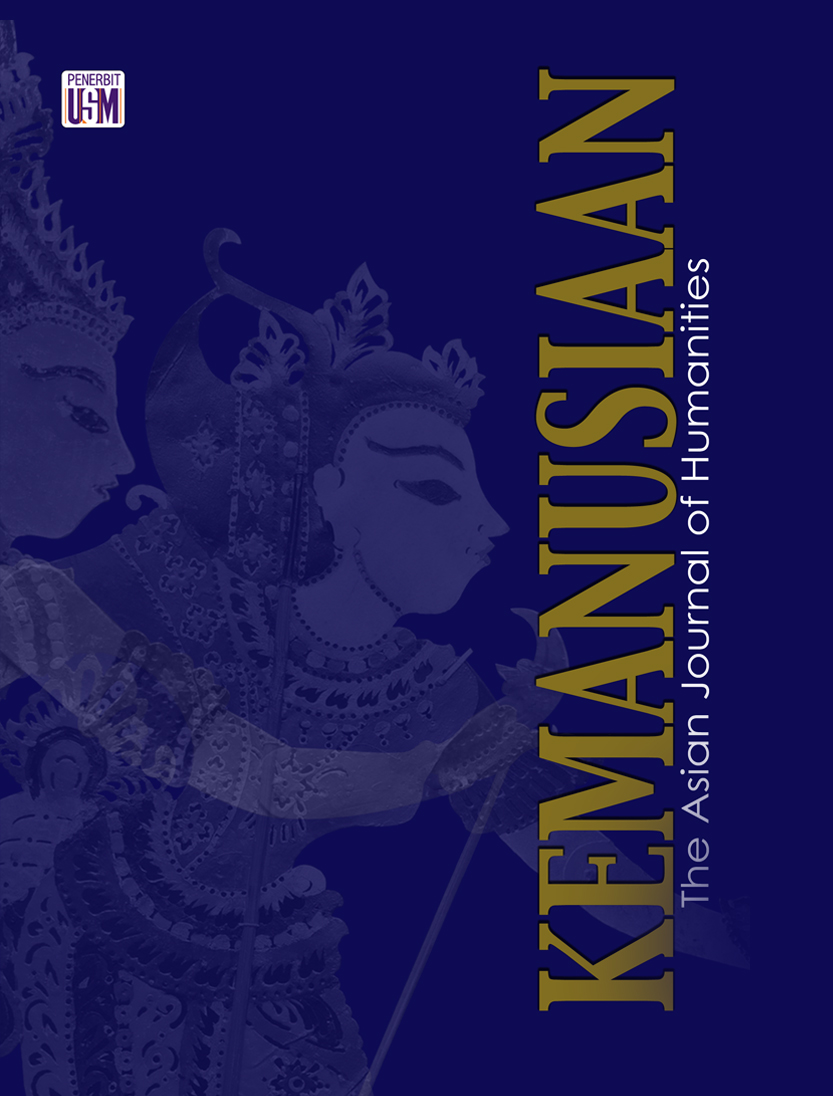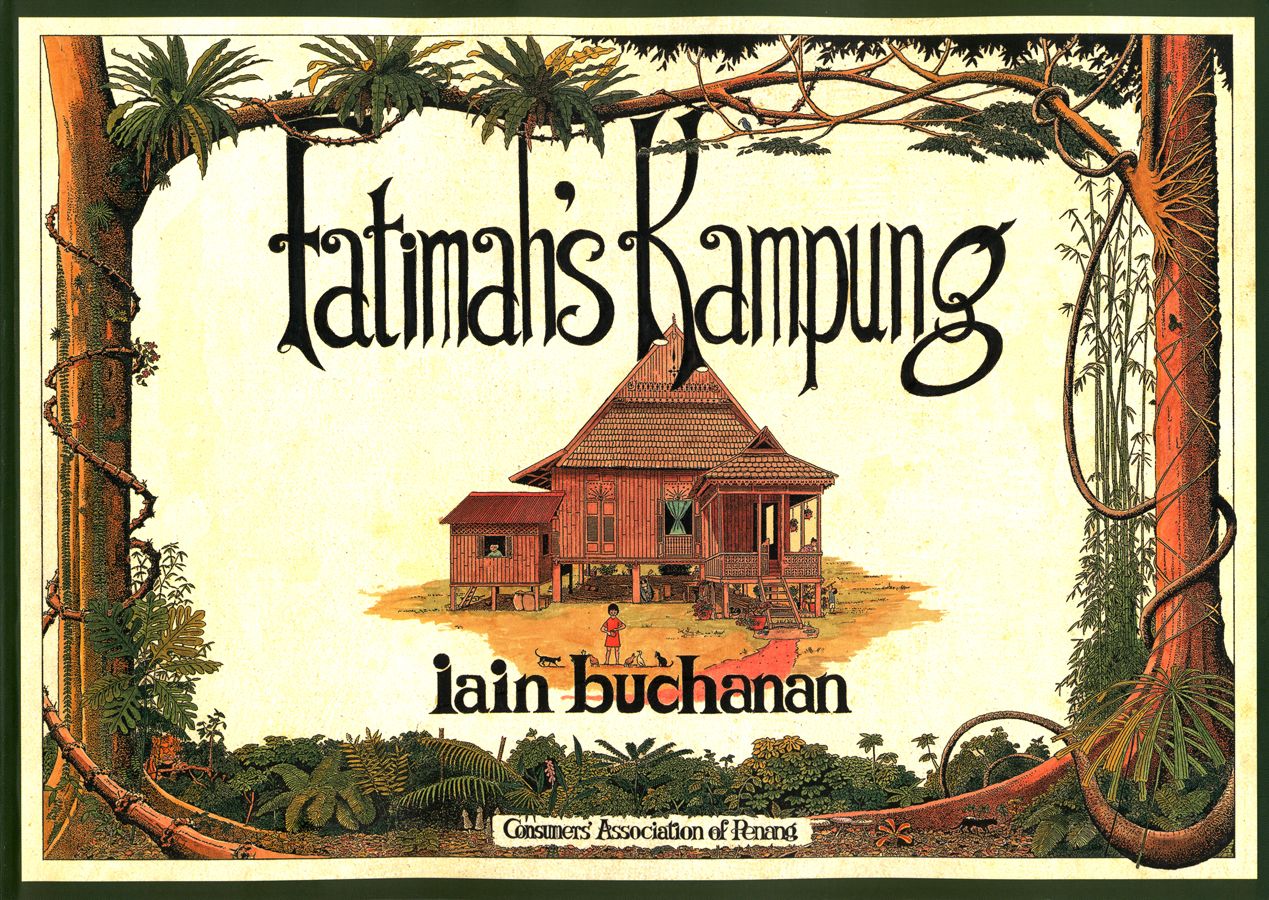KEMANUSIAAN
The Asian Journal of Humanities
Published by
Penerbit Universiti Sains Malaysia
| Past Issue - Volume 16, 2009 |
EDITORIAL
This volume features five articles that discuss various interesting and contemporary issues in the areas of culture, literature, language and linguistics. The first contribution is an elegant discussion on how culture could be a catalyst for national development. The authors discuss this within the context of Nigeria and draw on resources of Yoruba verbal arts to argue that art forms that are rooted in culture can play a vital role in socio-political development.
The next two papers involve two of Shakespeare's classic plays. The main concern of one is the issue of problematic themes in Shakespeare's timeless play Measure for Measure. The paper argues that these themes, in particular the theme of sexuality, conflict with modern-day living and thinking. The author discusses this with reference to the interpretation of the play in two major productions. The other contribution is an examination of language and power in the play Julius Caesar. Using an eclectic framework of linguistic theories, the paper examines the 'duel-like orations' of two rivals in the play, to demonstrate the power of language and language in power.
The issues that are raised in the fourth and fifth papers concern the Malay language. The former, a critical analysis of contemporary Malay language and the identity of its speakers, discusses the construction of the Malay identity in Malaysia and the challenges to this construction in the era of globalisation. The concluding paper, unlike the previous paper, is not concerned with contemporary Malay language. It is an analytical overview of 17th century Malay based on the entries in a bilingual dictionary of Malay and English by Thomas Bowrey published in 1701. The author examines the linguistic features of the Malay entries in the dictionary to discuss the morphological, structural as well as sociolinguistic aspects of oral Malay 300 years ago.
- Cultural Exploration as Alter/native Route to National Development: Insights from Yoruba Verbal Arts
Oluwole Coker and Adesina Coker
Abstract: This paper interrogates Yoruba verbal arts and situates culture as a catalyst for development. It is suggested that the intricate resources of oral art, exemplified by Yoruba textual references, are viable ingredients for socio-cultural empowerment. To fully comprehend the dynamics of a society in constant change due to external and internal realities, one must reconsider culture in order to reposition the society. The multidimensional and multidisciplinary significance of Yoruba verbal art demonstrate that culture has a vital role to play in any meaningful socio-political advancement in the Nigerian body polity. The ideas conveyed in proverbial expressions, representing key cultural realities of the Yoruba people, offer insights and ideas for development and social good. The paper submits that a deeper exploration of the intricate resources of verbal art is a viable route to development.
Keywords and phrases: culture, Yoruba, folklore, development, verbal arts
Download
- Measure for Measure: A Thrice Told Tale
Halimah Mohamed Ali
Abstract: This paper argues that Measure for Measure is a difficult play to perform because it has problematic themes, especially the theme of sexuality, that clash with the way of life and thinking of contemporary society. As such, any director who chooses to stage it must consider these difficulties and how to present them in a natural manner without making the audience feel that the whole production is contrived. The directors of the two major productions discussed in this paper tried their best to present a Measure for Measure that would be acceptable to the modern society. It is evident that there are many interpretations of the Duke and Isabella's characters and also of Isabella's reaction to the Duke's proposal at the end of the play. It can be concluded that no interpretation is wrong because each actor or director brings with him his own reading of the play, and every reading has been influenced by other performances and textual criticisms. Since Measure for Measure is a thematically rich play, it should not be confined to a single interpretation. The different performances of Measure for Measure have proven that theatre is experimental as well as ageless. Because it is a brilliant play with a myriad of interpretations, Measure for Measure will not cease to be a favourite for directors in times to come. It is not wrong to predict that fans of Shakespeare in general and of Measure for Measure in particular can look forward to many more productions.
For experienced Shakespeare observers all performances are thrice-told tales.
The perceiving eye absorbs the performance even as the mind's eye attends to
the text. Both are augmented by the inner ear buzzing with those other voices,
both critical and dramatic, carried by the observer into the theatre.
(Crowl, Samuel 1992: 3)
Keywords and phrases: Shakespeare, sexuality, law, theatre, ducal robes
Download
- Verbal Power Duel: Verbal Combat Strategies in Shakespeare's Julius Caesar: Brutus Versus Antony
Aydin Behnam
Abstract: In A Glossary of Contemporary Literary Theory, Jeremy Hawthorn refers to Cultural Materialism as an "umbrella term" that allows itself the opulence to utilise a wide range of tools and theories from many different disciplines. This allows us to justify the nature of both commonly acknowledged and abstruse socio-cultural episteme and discourse, one of the most prominent of which is the issue of power and power relations. This paper, which was originally part of a larger body of work on Cultural Materialism, tries to draw upon a few different theories to examine the confrontational relationship that exists between the two prominent characters of Shakespeare's (1953) Julius Caesar (namely Antony and Brutus), as represented by the duel-like orations of the two characters. The main goal of the paper is to demonstrate how Antony is able to manipulate the words of Brutus against him and thus succeed in captivating the crowd. The theoretical discussions drawn upon in this article will include Austin's (1999) ideas on language as action, Bourdieu's (1999) argument of dialogue as contest and Hutchby's (1999) findings on turn-taking strategies. This paper will also incorporate Paul Grice's Cooperative Principle, introduced in his "Logic and Conversation" (1999). This principle argues that the flouting of any of Grice's four maxims by the characters is meaningful and effective because it introduces an "implicature" in the political and social context in which the pieces of discourse take place.
Keywords and phrases: cooperative principle, language and power, oration, H.P. Grice
Download
- Bahasa Melayu di Persimpangan: Antara Jati Diri dengan Rempuhan Globalisasi (The Malay Language at Crossroads: Between Identity and the Onslaught of Globalisation)
Abdullah Hassan
Abstrak: Makalah ini membincangkan tentang kaitan antara bahasa, khususnya bahasa Melayu dengan jati diri individu dan bangsa, khususnya Melayu di Malaysia. Definisi jati diri individu dan bangsa dikupas menggunakan kamus falsafah dan rujukan silang kepada beberapa definisi daripada ahli sosiologi, sejarah dan sains politik. Berdasarkan kupasan tersebut dirumuskan bahawa terdapat lima ciri yang membentuk jati diri bangsa, yakni leluhur, bahasa, kebudayaan, agama dan tempat tinggal yang sama. Namun begitu, di sebalik ciri yang membentuk jati diri terdapat juga mekanisme yang merangsang perubahannya. Makalah ini selanjutnya membincangkan beberapa hipotesis yang menjana perubahan jati diri sesebuah bangsa. Hipotesis yang dimaksudkan dikaitkan dengan bahasa dan sehubungan dengan hal ini makalah ini menyimpulkan bahawa perubahan jati diri individu atau bangsa berlaku apabila terdapat perubahan bahasa yang digunakan.Kata kunci dan frasa: bahasa Melayu, jati diri, globalisasi, perubahan
Abstract: This article discusses the relationship between the malay language and the identity of the individual and the race, particularly in relation to the Malays in Malaysia. The identity of an individual and a race is defoned from a philosophical perspective and cross-referenced with definitions by sociologist, historians and social scientists. Based on this, it is concluded that there are five elements that shape the identity of a race, that is, the same ancestry, language, culture, religion, and locale. Whilst there are elemental structures that undergrid an identity, there are factors that can cause an identity to change. This is discussed in light of a few hypotheses that the present article argues can generate change in the identity of a race. The article concludes that the change in the identity of an individual or a race happens when there is change in the language that is used.
Keywords and phrases: Malay language, identity, globalisation, change
- Some Aspects of Seventeenth Century Malay via Thomas Bowrey's Bilingual Dictionary, Published in 1701
Mashudi Kader
Abstract: This article presents a description and an analytical overview of Bowrey's bilingual dictionary, published in 1701. It examines the word entries (lemmas) found in the dictionary, including the content of the supplements of the dictionary. This article discusses some aspects of the morphology of oral Malay as found in the dictionary data, as well as some of the basic syntactic patterns and the nature of the sociolinguistic dimensions that are reflected in the dictionary. Some morphological and syntactic patterns identified in the dictionary are diachronically compared with either the forms found earlier in written text or those found later in contemporary oral Malay in order to estimate the authenticity and correctness of the forms. Some of the findings include the possibilities that the prefixes ber-, ba-, and me- and their variants could be allomorphic in 17th century oral Malay. Between the ber- and ba- variants, ber- seemed to have a broader function. It also seemed that only ber- had survived to the present day; the original function of the prefix ba- was likely taken over by either ber- or me- and their allomorphic variants. The syntactic data revealed five basic syntactic patterns. In the interrogative structures, the wh- questions seemed to favour placing wh- words in the initial position in a sentence, without any interrogative marker (-kah). The yes-no questions seemed to favour the echo variety. Although ialah was present, its corresponding adalah did not appear. The presence of adakah seemed to suggest the existence of the corresponding adalah. Bowrey probably did not remember this when writing the dictionary. Regarding the sociolinguistic dimension, the dictionary revealed that the pronominal form kitta (present-day kita) was used only as a first-person singular pronoun. While aku did exist at the time, there seemed to be no saya in 17th century oral Malay.
Keywords and phrases: lemma, supplements, allomorphic variants, morphology, syntax
Download
- FATIMAH'S KAMPUNG (Author's Creative Process)
 Download
Download
- Book Review
 Download
Download
- Thesis Abstracts
 Download
Download



